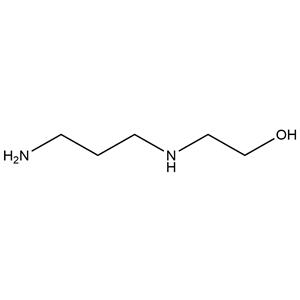
N-(2-Hydroxyethyl)-1,3-propanediamine NEW
| Price | $35 | $1.1 |
| Package | 1kg | 1000kg |
| Min. Order: | 1kg |
| Supply Ability: | g-kg-tons, free sample is available |
| Update Time: | 2024-04-20 |
Product Details
| Product Name: N-(2-Hydroxyethyl)-1,3-propanediamine | CAS No.: 4461-39-6 |
| Min. Order: 1kg | Purity: 99% |
| Supply Ability: g-kg-tons, free sample is available | Release date: 2024/04/20 |
| Lead time: In stock, ready for shipment | Packaging: bag/bottle/drum/IBC |
| Delivery: By express, by air, by sea | Origin: Manufacturer, advantage product |
| COA, MSDS: Available, contact us for details | Name: Mia |
1. Materials information
| Name | 2-(3-Aminopropylamino)ethanol |
|---|---|
| Synonym | More Synonyms |
| Density | 1.0±0.1 g/cm3 |
|---|---|
| Boiling Point | 240.7±15.0 °C at 760 mmHg |
| Melting Point | 15-19 °C |
| Molecular Formula | C5H14N2O |
| Molecular Weight | 118.177 |
| Flash Point | 99.4±20.4 °C |
| Exact Mass | 118.110611 |
| PSA | 58.28000 |
| LogP | -1.32 |
| Vapour Pressure | 0.0±1.1 mmHg at 25°C |
| Index of Refraction | 1.472 |
| Water Solubility | miscible |
Name:N-(2-Hydroxyethyl)-1 3-propanediamine 97+% Material Safety Data SheetSynonym:None knownCAS:4461-39-6Section 1 - Chemical Product MSDS Name:N-(2-Hydroxyethyl)-1 3-propanediamine 97+% Material Safety Data Sheet Synonym:None known Section 2 - COMPOSITION, INFORMATION ON INGREDIENTS CAS#Chemical NamecontentEINECS#4461-39-6N-(2-Hydroxyethyl)-1,3-propanediamine97+224-718-0Hazard Symbols: C Risk Phrases: 35 Section 3 - HAZARDS IDENTIFICATION EMERGENCY OVERVIEW Causes severe burns.Corrosive.The toxicological properties of this material have not been fully investigated. Potential Health Effects Eye: Causes eye burns. May cause chemical conjunctivitis and corneal damage. Skin: Causes skin burns. May cause skin rash (in milder cases), and cold and clammy skin with cyanosis or pale color. Ingestion: May cause severe and permanent damage to the digestive tract. Causes gastrointestinal tract burns. The toxicological properties of this substance have not been fully investigated. May cause systemic effects. Inhalation: Causes chemical burns to the respiratory tract. The toxicological properties of this substance have not been fully investigated. May cause systemic effects. Chronic: No information found. Section 4 - FIRST AID MEASURES Eyes: Get medical aid. Do NOT allow victim to rub eyes or keep eyes closed. Extensive irrigation with water is required (at least 30 minutes). Skin: Get medical aid. Immediately flush skin with plenty of water for at least 15 minutes while removing contaminated clothing and shoes. Wash clothing before reuse. Destroy contaminated shoes. Ingestion: Do not induce vomiting. If victim is conscious and alert, give 2-4 cupfuls of milk or water. Never give anything by mouth to an unconscious person. Get medical aid. Inhalation: If not breathing, give artificial respiration. If breathing is difficult, give oxygen. Get medical aid. Do NOT use mouth-to-mouth resuscitation. If breathing has ceased apply artificial respiration using oxygen and a suitable mechanical device such as a bag and a mask. Notes to Physician: Section 5 - FIRE FIGHTING MEASURES General Information: As in any fire, wear a self-contained breathing apparatus in pressure-demand, MSHA/NIOSH (approved or equivalent), and full protective gear. During a fire, irritating and highly toxic gases may be generated by thermal decomposition or combustion. Vapors may be heavier than air. They can spread along the ground and collect in low or confined areas. Containers may explode when heated. Extinguishing Media: Use foam, dry chemical, or carbon dioxide. Section 6 - ACCIDENTAL RELEASE MEASURES General Information: Use proper personal protective equipment as indicated in Section 8. Spills/Leaks: Absorb spill with inert material (e.g. vermiculite, sand or earth), then place in suitable container. Avoid runoff into storm sewers and ditches which lead to waterways. Clean up spills immediately, observing precautions in the Protective Equipment section. Provide ventilation. Section 7 - HANDLING and STORAGE Handling: Wash thoroughly after handling. Avoid contact with eyes, skin, and clothing. Do not breathe dust, vapor, mist, or gas. Keep container tightly closed. Avoid ingestion and inhalation. Do not ingest or inhale. Use only in a chemical fume hood. Discard contaminated shoes. Storage: Store in a tightly closed container. Store in a cool, dry, well-ventilated area away from incompatible substances. Corrosives area. Section 8 - EXPOSURE CONTROLS, PERSONAL PROTECTION Engineering Controls: Facilities storing or utilizing this material should be equipped with an eyewash facility and a safety shower. Use adequate ventilation to keep airborne concentrations low. Exposure Limits CAS# 4461-39-6: Personal Protective Equipment Eyes: Wear appropriate protective eyeglasses or chemical safety goggles as described by OSHA's eye and face protection regulations in 29 CFR 1910.133 or European Standard EN166. Skin: Wear appropriate protective gloves to prevent skin exposure. Clothing: Wear appropriate protective clothing to prevent skin exposure. Respirators: A respiratory protection program that meets OSHA's 29 CFR 1910.134 and ANSI Z88.2 requirements or European Standard EN 149 must be followed whenever workplace conditions warrant respirator use. Section 9 - PHYSICAL AND CHEMICAL PROPERTIES Physical State: Liquid Color: clear, colorless Odor: None reported. pH: 11-12 (20g/L aq. soln) Vapor Pressure: <0.1 mbar @ 20 Viscosity: 164 mPas 20 deg C Boiling Point: 255 deg C @ 760.00mm Hg Freezing/Melting Point: 15-19 deg C Autoignition Temperature: 325 deg C ( 617.00 deg F) Flash Point: 152 deg C ( 305.60 deg F) Explosion Limits, lower: Not available. Explosion Limits, upper: Not available. Decomposition Temperature: >250 deg C Solubility in water: miscible Specific Gravity/Density: 1.0070g/cm3 Molecular Formula: C5H14N2O Molecular Weight: 118.20 Section 10 - STABILITY AND REACTIVITY Chemical Stability: Stable under normal temperatures and pressures. Conditions to Avoid: Moisture, excess heat. Incompatibilities with Other Materials: Acidic conditions, acids, strong oxidizing agents. Hazardous Decomposition Products: Carbon monoxide, carbon dioxide, nitrogen oxides (NOx) and ammonia (NH3). Hazardous Polymerization: Has not been reported. Section 11 - TOXICOLOGICAL INFORMATION RTECS#: CAS# 4461-39-6 unlisted. LD50/LC50: Not available. Carcinogenicity: N-(2-Hydroxyethyl)-1,3-propanediamine - Not listed by ACGIH, IARC, or NTP. Section 12 - ECOLOGICAL INFORMATION Section 13 - DISPOSAL CONSIDERATIONS Dispose of in a manner consistent with federal, state, and local regulations. Section 14 - TRANSPORT INFORMATION IATA Shipping Name: POLYAMINES, LIQUID, CORROSIVE, N.O.S.* Hazard Class: 8 UN Number: 2735 Packing Group: II IMO Shipping Name: POLYAMINES, LIQUID, CORROSIVE, N.O.S. Hazard Class: 8 UN Number: 2735 Packing Group: II RID/ADR Shipping Name: POLYAMINES, LIQUID, CORROSIVE, N.O.S. Hazard Class: 8 UN Number: 2735 Packing group: II Section 15 - REGULATORY INFORMATION European/International Regulations European Labeling in Accordance with EC Directives Hazard Symbols: C Risk Phrases: R 35 Causes severe burns. Safety Phrases: S 26 In case of contact with eyes, rinse immediately with plenty of water and seek medical advice. S 36/37/39 Wear suitable protective clothing, gloves and eye/face protection. S 45 In case of accident or if you feel unwell, seek medical advice immediately (show the label where possible). WGK (Water Danger/Protection) CAS# 4461-39-6: 2 Canada None of the chemicals in this product are listed on the DSL/NDSL list. CAS# 4461-39-6 is not listed on Canada's Ingredient Disclosure List. US FEDERAL TSCA CAS# 4461-39-6 is not listed on the TSCA inventory. It is for research and development use only. SECTION 16 - ADDITIONAL INFORMATION N/A |
| Symbol | 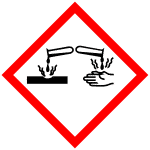 GHS05 |
|---|---|
| Signal Word | Danger |
| Hazard Statements | H314 |
| Precautionary Statements | P280-P305 + P351 + P338-P310 |
| Personal Protective Equipment | Faceshields;full-face respirator (US);Gloves;Goggles;multi-purpose combination respirator cartridge (US);type ABEK (EN14387) respirator filter |
| Hazard Codes | C:Corrosive; |
| Risk Phrases | R35 |
| Safety Phrases | S26-S36/37/39-S45 |
| RIDADR | UN 2735 8/PG 3 |
| WGK Germany | 3 |
| Packaging Group | III |
| Hazard Class | 8 |
| HS Code | 29221980 |
2. Packaging of materials
For powders: normal is 25kgs/Drum or bag, or larger/smaller package as request.
For liquids: normal 25kgs/drum, 180-300kgs/bucket, or IBC, determined by the nature of the product.
Or smaller package 1kg/bottle, 10kgs/bottle as request.


3. Shipping & Delivery
By Express
Provide door to door service
Suitable for goods under 50kg
Delivery: 3-7 days
Cost: low cost

By Air
Provide airport to airport service
Suitable for goods over 50kg
Delivery: 3-14 days
Cost: high cost

By Sea
Provide seaport to seaport service
Suitable for goods over 100kg
Delivery: 2-45 days
Cost: low cost

4. Contact information
For more details, pls contact us freely.
Email address: mia@fdachem.com
Mob: 86 18336764634
WhatsApp/Skype/Wechat/LINE: 86 18336764634
Company Profile Introduction
You may like
Recommended supplier
| Product name | Price | Suppliers | Update time | |
|---|---|---|---|---|
| $79.00/1kg |
VIP1Y
|
Hebei Zhuanglai Chemical Trading Co Ltd
|
2024-12-10 | |
| $5.00/200kg |
VIP6Y
|
Jinan Finer Chemical Co., Ltd
|
2022-05-25 | |
| $0.00/1KG |
VIP4Y
|
WUHAN FORTUNA CHEMICAL CO., LTD
|
2023-02-22 | |
| $50.00/1kg |
VIP1Y
|
Hebei Zhuanglai Chemical Trading Co Ltd
|
2024-12-03 | |
| $2.00/1KG |
VIP6Y
|
Career Henan Chemical Co
|
2020-01-08 |
- Since: 2023-02-10
- Address: Room 01, 2288 E05, Building 14, East Henan University, Science and Technology Park, 279 Xisanhuan Ro




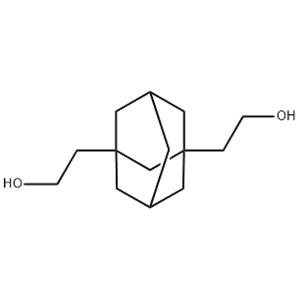
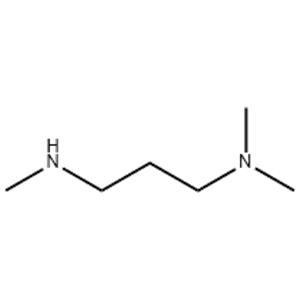
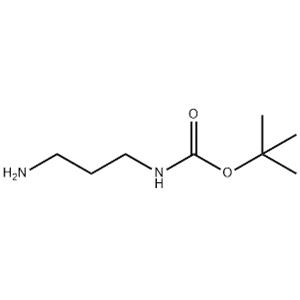

 China
China